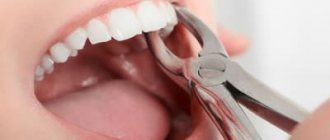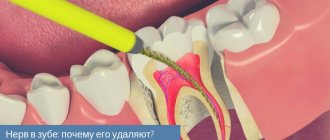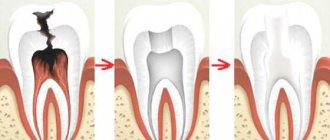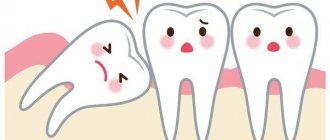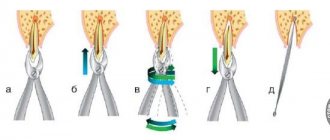Before surgery, it is necessary to carry out professional oral hygiene.
If the operation is performed with an anesthesiologist, you must come with an accompanying person, or the operation will be cancelled.
Recommendations for surgical treatment
After surgery, you may experience pain, which will go away as the tissue heals. Postoperative swelling or hematoma can also occur in areas adjacent to the surgical site, which is a natural consequence of surgery. There may be a slight increase in body temperature.
Please follow our recommendations!
Before surgery
- Prepare an ice pack at home.
- On the day of surgery, eat a light meal 2-3 hours before your scheduled time.
- The day before surgery, the consumption of alcoholic beverages is strictly prohibited.
- Be sure to inform your dentist about all the individual characteristics of your body and any allergic reactions, in order to accurately select an anesthetic that is safe for you.
- Visit the toilet before surgery.
- It is better to come to the operation in loose clothes without a collar.
After operation
— To avoid severe swelling and bleeding during the first 24 hours after surgery, it is necessary to apply an ice pack to the cheek on the side of the operation for 15-20 minutes with breaks of 30-40 minutes.
- Rinsing your mouth when bleeding is unacceptable!
— After sinus lift surgery, you should not drink through a straw, blow your nose vigorously, or puff out your cheeks.
- To reduce the likelihood of nosebleeds (after upper jaw surgery) and reduce post-operative swelling, you should sleep with your head elevated (add an extra pillow) for several days after surgery.
— It is not recommended to use tobacco products 1 week before and 2 weeks after surgery.
— It is prohibited to drive a car on the day of surgery with premedication.
- It is not recommended to eat until the anesthetic wears off. In the first days after surgery, it is recommended to eat soft, non-hot foods.
— It is not recommended to drink alcohol, coffee, or strong tea to avoid the negative effects of these drinks on blood circulation and wound healing.
Factors determining the choice of tooth extraction technique:
- condition of the tooth (degree and nature of destruction of hard dental tissues);
- features of the anatomical structure and position of the tooth, taking into account its group affiliation;
- features of the anatomical structure of the dentoalveolar segment in the area of the tooth being removed;
- The condition of the marginal periodontium is the degree of tooth mobility.
The operation of tooth extraction is the most common in the outpatient practice of a dental surgeon. Like any surgical intervention, tooth extraction surgery may be accompanied by complications that arise during the operation:
- Fracture of the tooth or root being removed. It can be associated both with significant tooth destruction and with structural features of the root or surrounding bone tissue.
- Fracture, dislocation and removal of an adjacent tooth occur as a result of using forceps with wider cheeks than the crown of the tooth being removed, or when elevators are used incorrectly, when the elevator rests on the adjacent tooth.
- Damage to the crown of the antagonist tooth occurs when the forceps slip off the tooth being removed.
- Pushing the root into the soft tissue is possible when removing the third lower molar in case of insufficient fixation with the fingers of the left hand.
- Fracture of the mandible is rare. The development of this complication is facilitated by pathological processes in the body of the lower jaw, which reduce its strength (odontogenic osteomyelitis, benign and malignant tumors.)
- Fracture of a section of the alveolar process. May be as a result of a pathological process in the periodontium.
- A fracture of the tubercle of the upper jaw can occur when the upper 8th tooth is removed.
- Dislocation of the lower jaw can occur when the mouth is opened wide and strong pressure is applied to the lower jaw with forceps or an elevator.
- Damage to soft tissue as a result of instrument slipping.
- Perforation of the bottom of the maxillary sinus can be a result of individual structural features of the upper jaw or due to previous pathological processes in the area of the apex of the tooth root.
- Aspiration of teeth and small instruments. This is facilitated by a decrease in the gag reflex after anesthesia and the position of the patient in a chair with his head thrown back.
Early postoperative complications may also occur. This type of complications includes:
- bleeding, which may be the result of a mechanical injury or a consequence of arterial hypertension or diseases accompanied by dysfunction of the body’s coagulation system;
- alveolar (socket) pain that appears after the cessation of anesthesia in the area of the extracted tooth. This is a natural response to tissue injury;
- alveolitis – a purulent infectious-inflammatory process in the periodontium of an extracted tooth;
- osteomyelitis;
- neuritis of the inferior alveolar nerve.
Additional Tips
Avoid lifting heavy objects, bending over, playing sports, or taking hot baths for 5 to 7 days after surgery.
Within a few days, performance and the ability to drive may be reduced.
Remember to take medications prescribed by your dental surgeon after surgery.
We kindly ask you!
Appear for examination and removal of stitches 5-7 days after surgery, in agreement with your surgeon. You must immediately notify your surgeon or clinic administrator of any changes in your health.
Recommendations for caring for dental implants
The service life of the implant depends on:
- The correctness of the surgical and prosthetic stages carried out in the dental clinic.
- The patient's compliance with the recommendations given by the dentist immediately in the postoperative period and the period after implant prosthetics.
- Careful hygienic care of the “implant-crown” structure.
- Blood supply to bone tissue and gums in the area of implantation. (Smoking cigars and cigarettes has a very, very negative effect on peripheral blood circulation, which can even interfere with implant implantation.!!!)
Technique for removing a tooth from the lower jaw
- Using a dental smoother, the circular ligament surrounding the dental neck is peeled off. This stage is necessary to reduce damage to nearby soft tissues.
- Forceps delivery. Beak-shaped forceps are indicated for removing lower teeth.
- Move the forceps towards the root system.
- The tongs are clamped as tightly as possible.
- Loosening of the tooth. This stage, if the tooth is single-rooted, is done using the rotation method. Rotation – rotation along an axis. If the structural unit of the jaw is multi-rooted, then it is loosened using the method of luxation (loosening) - back and forth, left and right.
- Extraction from the hole.
- Inspect the hole for fragments and granulations; if there are any, remove them with a curettage spoon.
- A gauze pad is placed on the injured area.
- The patient is advised to discard the tampon after bleeding has stopped. This usually happens within 30 minutes. It is recommended not to eat for two hours. On this day, avoid too hot foods and physical activity.
Patients often ask the question: why can’t you eat exactly 2 hours? This is due to the action of the anesthetic. Removal of the lower units is always carried out under local anesthesia, as a result of which sensitivity is lost not only in the separate structure of the jaw, the entire half of the jaw bone is anesthetized, and along with it the soft tissues of the tongue and cheek. The anesthetic continues to act for 120 minutes, during which time, if a person begins to chew, he will bite his own tissues along with the food without feeling any pain, which will lead to serious injuries. Physical activity and hot foods and drinks can cause bleeding from the socket.
Oral hygiene
Regardless of the size or number of implants, they must be cared for as if they were regular teeth. Brush and floss your dental implants twice a day. Use special fluffy dental floss (for example, Oral-B superfloss or ultrafloss).
When brushing your teeth, pay special attention to the back teeth and between teeth. Use a soft or medium-hard brush. In addition, use an irrigator for additional deep cleaning of the interdental spaces with water irrigation.
There are special brushes that can be used to clean interdental spaces - dental brushes. Ask your dentist about them - in some cases they are not recommended.
Visit your dental hygienist twice a year; they are the only ones who can clean your implants as thoroughly as necessary. Regular visits to the dentist are very important. Your dentist will check the condition of your gums, jaws and implants.
Smoking is bad for your health and for dental implants, too. To have a good prognosis for the lifespan of your implants, it would be a good idea if you stopped smoking.
Complications in dentistry during tooth extraction that occur due to embedded wisdom teeth
- pericoronitis - the most popular, is inflammation of the gums around a partially erupted tooth. The tooth erupts gradually. First, one of its cusps appears, forming a gap in the gum, and the rest of the tooth remains covered by it, forming a hood. Con is a potential site for the development of infection. Due to the difficulty of cleaning, food debris and foreign bodies accumulate in this area and create ideal conditions for the growth of bacteria, which cause inflammation of the soft tissues around the wisdom tooth.
- Caries occurs on those surfaces of the teeth where plaque accumulates. Wisdom teeth are the outermost teeth and are often difficult to access with a toothbrush. Constant “under-cleaning” of plaque leads to its accumulation and the formation of caries. In addition, if a tooth has partially erupted, then it is located under the overhanging edge of the gum, which also contributes to the accumulation of a large amount of plaque and prevents tooth brushing. Often the position of the wisdom tooth is such that it is difficult to clean out the plaque between it and the adjacent tooth. In this case, caries can affect the contact surface of not only the wisdom tooth, but also the adjacent one.
- dystopia is the incorrect position of a tooth in the dentition, manifested by its displacement towards the cheek, tongue or rotation around its axis.
- damage to the roots of adjacent teeth. The wisdom tooth often takes on an incorrect position in the jaw, even to the point of being horizontal in the bone. At the same time, it can, as it were, “lean” on the root of the neighboring tooth, and when erupting, exert significant pressure on it. The pain caused serves as a bell to visit the dentist - surgery can prevent resorption of the root of the adjacent tooth.
Eating
Avoid chewing hard candy, ice, or other hard foods (such as hard chocolate or dry fish) as they may loosen or break the abutment screw.
Avoid foods such as caramel or toffee, as they may stick to the crown and cause the abutment screw to loosen.
Do not open bottles or crack nuts with your teeth for the same reasons.
Wear protective sports mouth guards when participating in sports and avoid direct blows to the face.
Refrain from grinding your teeth. If creaking occurs unintentionally or during sleep (bruxism), notify your dentist and he will make you a thin night guard.
The length of their service depends on the quality and regularity of care for implants.
Before and after implantation
Before surgery:
Prepare several days off after the date of the planned operation.
Do not smoke or reduce the number of cigarettes you smoke.
If you are sick on the eve of the operation, please notify the implantologist.
Ask your implantologist about the medications you will need immediately after surgery.
Patients suffering from compensated diabetes mellitus must follow a strict diet 2 weeks before surgery and 2 weeks after it.
Get a good night's sleep the night before surgery.
Make sure you are accompanied if you plan to undergo anesthesia, sedation or a complex operation, do not plan to be behind the wheel.
If you have herpetic rashes on the mucous membrane, the operation should be rescheduled.
After operation:
If you have had dental implants, you may experience some of the typical discomforts associated with any type of dental surgery. These may include:
- Swelling of the gums and face.
- Gum injury.
- Mobility of adjacent teeth.
- Pain at the implantation site.
- Minor bleeding.
- Bruises and bruises.
You may need painkillers and antibiotics. Follow the recommendations of the implantologist.
What must be observed after implantation:
- Brush your teeth with a soft brush before removing sutures
- Eat soft foods for 5-7 days. Do not eat hot, spicy or salty foods.
- Starting from the third day after surgery until the sutures are removed, you should rinse your mouth with a chlorhexidine solution twice a day (after brushing your teeth).
- Do not overheat in the sun or in a sauna.
- Do not engage in active sports.
- Do not smoke or reduce the number of cigarettes you smoke.
- Do not fly on an airplane, do not swim, do not dive for 2 weeks (especially important after sinus lift surgery).
- Do not blow your nose or sneeze with your mouth open (especially important after sinus lift surgery).
- If swelling, discomfort or other symptoms increase within a few days after surgery, or the temperature rises, contact your implant surgeon.
- After tooth extraction
- If you have had a tooth removed, you must take care of your oral cavity. By following certain recommendations, you will feel better and healing time will speed up.
Chapter 8. TOOTH EXTRACTION OPERATION
Tooth extraction
(extractio dentis)
is one of the most common operations in outpatient dental practice.
Tooth extraction is a forced rupture of the tissues connecting the root of the tooth with the walls of the socket and gum, and its removal from the alveoli.
The tooth extraction operation has a number of features. It can be either incredibly simple and easy, or complex, sometimes lasting for hours, requiring a complex set of instruments, general anesthesia and hospital conditions. When a tooth is removed, a fracture occurs in the socket, the walls of which inevitably move apart with open access to the spongy substance and bone marrow. In some cases, complications may arise, both local (inflammatory phenomena) and general - disruption of the cardiovascular, digestive and other systems.
INDICATIONS AND CONTRAINDICATIONS FOR TOOTH EXTRACTION OPERATION
There are indications and contraindications for tooth extraction surgery (Diagram 8.1, Tables 8.1, 8.2).
Scheme 8.1.
Indications and contraindications for tooth extraction surgery
Table 8.1.
Indications for tooth extraction surgery
| Indications | Reasons for deletion | Justifications |
| Urgent | Acute periapical inflammatory processes in the periodontium, causing osteomyelitis, abscess, phlegmon, sinusitis, lymphadenitis | Delay leads to progression of the inflammatory process, aggravating the general condition of the patient up to sepsis |
| Longitudinal fracture of a tooth exposing the pulp | The integrity of the tooth cannot be restored using therapeutic and orthopedic methods. | |
| Tooth in jaw fracture line | Prevents the reposition of jaw fragments. Promotes inflammatory-traumatic osteomyelitis | |
| Planned | Failure of endodontic treatment for chronic forms of periodontitis | Leads to immunodeficiency and chronic sepsis |
| Significant or complete destruction of the tooth crown, degree III mobility | Impossibility of therapeutic and orthopedic treatment | |
| Teeth that did not erupt on time or partially erupted (impacted and semi-impacted, dystopic in the presence of clinical manifestations) | Cause odontalgia, inflammatory processes in the mucous membrane of the oral cavity, tongue, chronic injury of the oral mucosa | |
| Incorrectly positioned teeth, protruded as a result of the loss of an antagonist (Popov-Godon phenomenon), converging, diverging, supernumerary teeth located outside the dental arch | Inability to correct the occlusal surface, difficulty chewing |
Table 8.2.
Contraindications to tooth extraction surgery
| Contraindications | Justifications | |
| Are common | Cardiovascular (pre-infarction conditions and within 3-6 months after myocardial infarction, hypertension during a crisis, coronary heart disease with frequent attacks of angina pectoris, etc., taking anticoagulants) | Requires special training in an anesthesia room or hospital setting |
| Blood disease - hemophilia, hemorrhagic diathesis, anemia, leukemia | Requires special training in an anesthesia room or hospital setting | |
| Infectious diseases (influenza, acute respiratory disease, erysipelas), pneumonia | Decreased body resistance. The operation is carried out after treatment by specialists | |
| Traumatic brain injury (bruise, concussion) | Additional trauma is associated with cerebral edema. The operation is performed in a neurosurgical department | |
| Acute diseases of the gastrointestinal tract, liver, kidneys, diabetes mellitus, etc. | The operation is carried out only after treatment by specialists and consultation with an anesthesiologist. | |
| The period before and during menstruation | Disturbance of the blood coagulation system - possible bleeding | |
| Pregnancy | Optimal timing for surgical debridement is from the 3rd to the 7th month of pregnancy | |
End of table. 8.2
| Contraindications | Justifications | |
| Local | A tooth located in the area of a malignant or benign tumor of the alveolar process | Possibility of malignancy or spread of metastases |
| Conducting radiation therapy for malignant tumors in the oral cavity | Possibility of radiation necrosis | |
| Ulcerative-necrotic processes in the oral cavity | Spread of necrosis | |
MEASURES TAKEN BEFORE TOOTH EXTRACTION OPERATION
Examination.
Before proceeding with tooth extraction, it is necessary to examine the patient: find out complaints, the presence of previous and concomitant diseases, collect an anamnesis of the disease, and allergological status. Data from the survey and examination of the external and oral cavity allow us to identify the presence of indications for surgery (Table 8.3).
Table 8.3.
Activities taken before tooth extraction surgery
| Sequence of stages | Execution method | Rationale |
| Conversation with the patient. Examination of the tooth to be removed | Establishing psychological contact with the patient. When examining a tooth, determine the degree of destruction of the crown and its mobility, and determine the presence of inflammation. Carefully examine the X-ray data | Reducing psycho-emotional stress to prevent fainting, collapse, shock. The examination allows you to identify indications for tooth extraction, outline a plan for surgical intervention, choose a method of pain relief, determine the surgical technique and the necessary instruments. An x-ray allows you to determine the condition of the bone tissue in the root area, the size of resorption, the relationship of the roots with the bottom of the nasal cavity, sinuses, and mandibular canal |
| Preparing the mouth before removal | Removal of dental plaque from the causative and adjacent teeth. Antiseptic mouth rinse | Prevention of possible inflammatory complications |
| Preparing the patient in the chair | When removing teeth in the upper jaw, the surgical field is at the level of the surgeon’s shoulder joint (Fig. 8.1). The patient's head is thrown back and turned in the opposite direction. When removing teeth in the lower jaw, the surgical field is located at the level of the elbow joint of the surgeon’s hand (Fig. 8.2, 8.3). The patient's position is semi-recumbent, the headrest is vertical | The correct position of the patient in the chair ensures optimal visibility of the surgical field and the tooth extraction operation. |
End of table. 8.3
| Sequence of stages | Execution method | Rationale |
| Lighting | Directing the beam of light from a dental lamp into the surgical field | The operation requires good natural and artificial lighting. |
| Preparing the surgeon's hands in compliance with the rules of asepsis | Before the operation, you must wash your hands with soap and a brush in running water, dry with a towel, and wear sterile disposable gloves. | To avoid contamination of microorganisms in the surgical field, the doctor performs all manipulations wearing a mask, safety glasses, and sterile disposable gloves. |
| Preparing instruments for inspection | The sterile tray contains tweezers, a spatula and sterile gauze swabs. A nurse gives a tray with sterile instruments | |
| Anesthesia | Carrying out adequate anesthesia according to indications | Prevention of painful shock |
| Tools and materials for tooth extraction surgery | The sterile tray contains tweezers, a spatula, sterile gauze swabs, a carpule syringe, injection needles, carpules with anesthetic, a sickle-shaped smoother, forceps and elevators according to the tooth or root being removed, and a curettage spoon. A nurse gives a tray with sterile instruments | |
| Instruments and materials required in case of complex removal and local complications of the operation | Additional tools and materials: hemostatic sponge, iodoform turunda, suture material, needle holder, scissors, scalpel, burs, straight tip and Farabeuf hook. A nurse gives instruments urgently during a complicated operation. |
The doctor must carefully examine the tooth to be removed. When examining the crown, you need to establish the degree of its destruction, the anomaly of the tooth and, depending on this, select the appropriate forceps or elevators, determine the presence of inflammation, and the degree of pathological mobility of the tooth. Using an x-ray, it is necessary to establish the condition of the bone tissue in the root area, the nature and size of bone resorption or the type and size of hypercementosis, the number, shape, size and degree of divergence or fusion of the roots of the tooth, as well as their relationship with the bottom of the nasal cavity, the maxillary sinus, the mandibular canal . It is important to find out whether the roots of the tooth are connected by a septum, whether it is strong, and whether it is advisable to pre-sever the roots.
Stopping bleeding:
To control bleeding, it is necessary to bite down on a gauze pad placed by the dentist in the oral cavity. The pressure promotes the formation of a blood clot in the socket. If you have heavy bleeding that has not stopped within an hour of tooth extraction, you should bite into a regular tea bag. Tannin in tea helps in the formation of blood clots. Hold the tampon or tea bag until the bleeding stops.
Additionally, cool the extraction area, apply a cold compress to the face in the area of tooth extraction for 10-15 minutes. at one o'clock. A slight bleeding on the first day after removal is normal.
Contraindications
There are contraindications to removal, these include:
- aggravated form of cardiovascular diseases;
- any infectious exacerbation;
- pathologies and poor blood clotting;
- strokes;
- mental illness;
- heat;
- stomatitis.
The doctor is also obliged to examine the patient and rule out a negative reaction to painkillers. After this operation, it is necessary to monitor the patient’s condition and exclude bleeding, severe pain and inflammation. Tooth extraction with a professional approach does not pose a threat to health or life and is part of the normal practice of a dentist.
The New Technologies Clinic provides modern technologies. Call us now!
